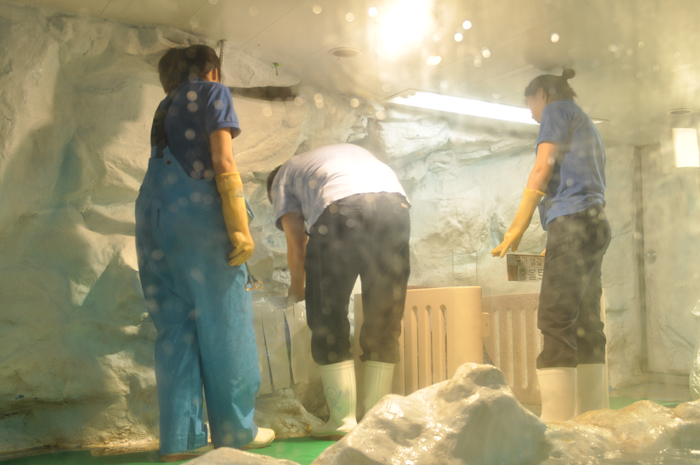Beyond what your eyes take for granted
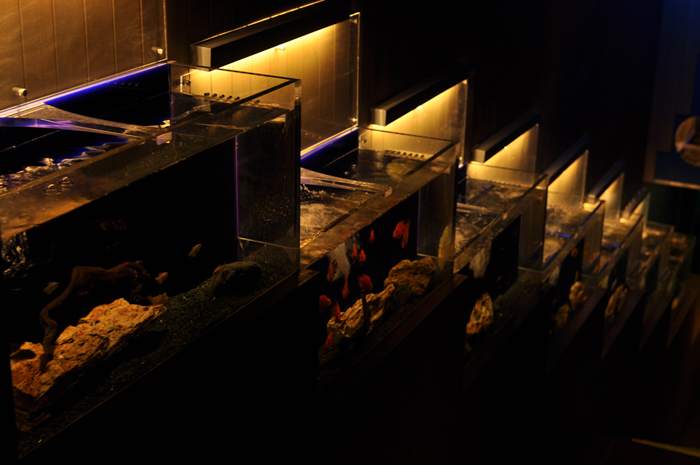
AN AVERAGE of 8,000 people visit the aquarium every day. 40,000 creatures from 200 different species await them. Once people step in, the dazzling silver flashes from the fish swimming in unison, the crystal-clear glass walls of containers, and the seamlessly cleaned floor catch their eye; yet, few, sometimes even none, are seen working. The aquarium seems just about perfect without any effort. This is, however, only what our eyes can see. Behind the scenes, hands are moving tirelessly to maintain that nonchalant perfection.
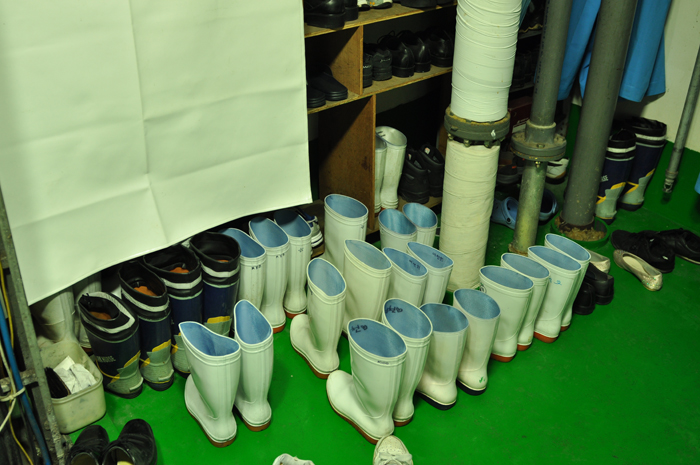
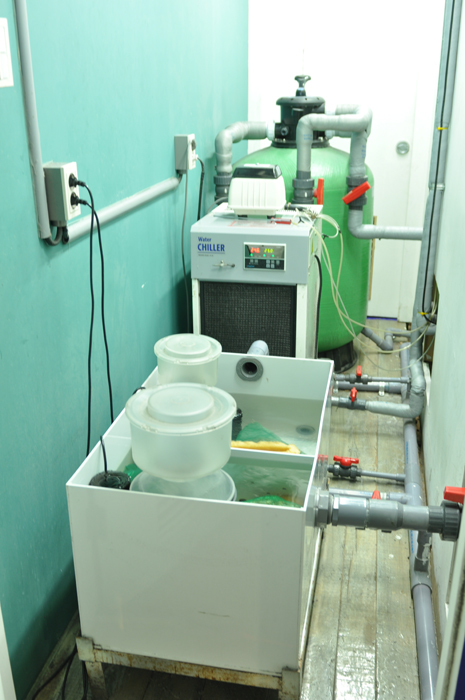
Already at 8 a.m., the aquarium is busy. Personnel move to their posts and start preparing for the opening scheduled two hours later. But before they assume their posts, they disappear into and then reappear from a hidden chamber. Dubbed “Backstage,” this chamber is the checkpoint for personnel and also where the magic happens. The water temperature, the humidity levels, and other settings are adjusted here. Marine creatures not yet ready for exhibition are kept here too.
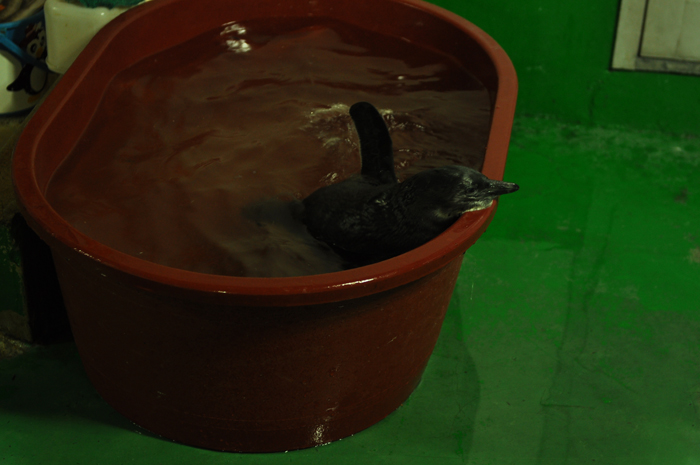
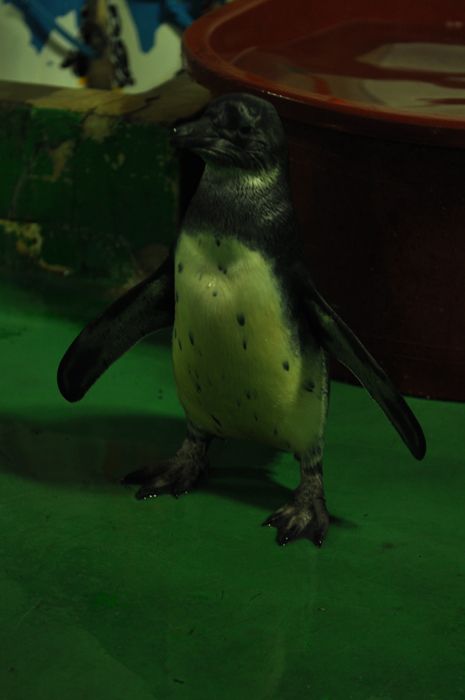
See that penguin? He is afraid of the water, so the crew needs to train him how to swim, a process analogous to parents teaching their children to walk. All this work done by the staff is really the ground basis of the aquarium.
Just as we humans eat three times a day, so the inhabitants of the aquarium need to be fed to be kept fresh and lively. Naturally, one of the most important operations that takes place in the "Backstage" is the preparation of feed for the fish and other marine animals. This is no easy task, since the sight of the blood and the stench so typical of sea-feed would repel many a person. Yet it is not just a matter of handling the raw material and washing the blood off them. In order to maintain a healthy balance in the aquarium, the workers need to know when and how much to feed the animals. To experienced employees, however, this is just a part of their daily job. After all, without their hidden efforts we would be able to enjoy neither the swarms of swimming fish nor the duo of witty seals.
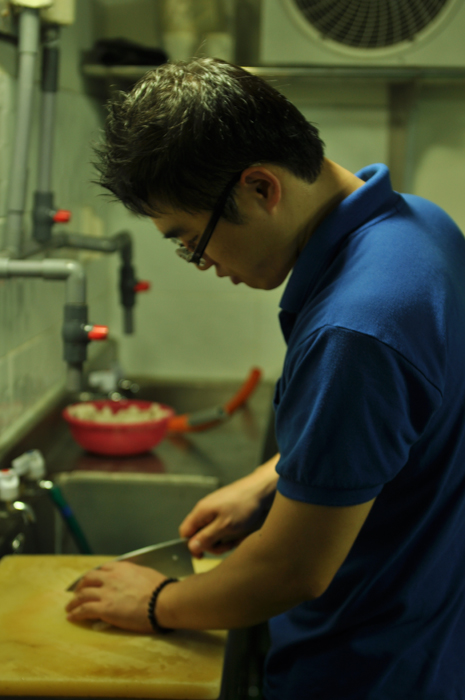
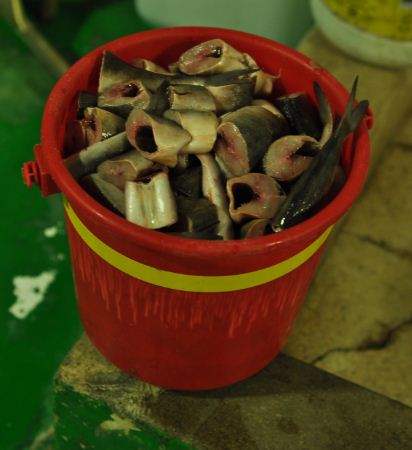
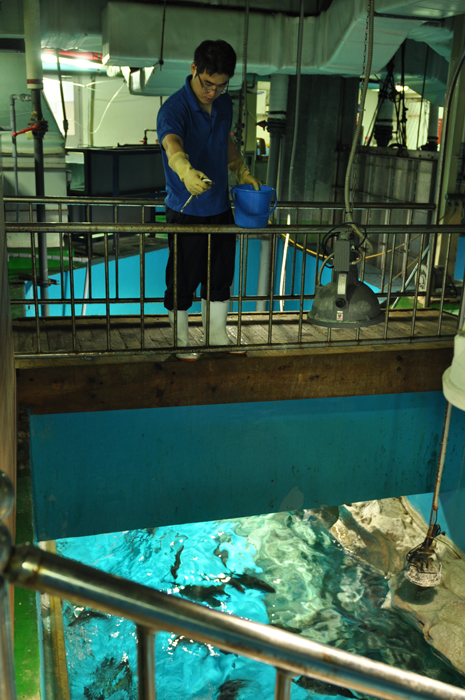
Good hygiene is conducive to good health for humans; the same is also true for the inhabitants of the aquarium. Through secret doors hidden in the "Backstage," personnel enter directly or stretch their hands into the individual containers of marine creatures to cleanse them of the unwanted leftovers of metabolism. Unlike the previous two stages of work, this last stage often involves direct contact, if not confrontation, with marine creatures. Some might wonder how handling a group of cute penguins and seals can be difficult. What many people do not know, however, is that every tamed animal still keeps a piece of wildness inside; the person who cleans and trains the seals has to undergo a tug-of-war every morning. The work is dirty and sometimes even dangerous, but that does not discourage the staff from doing their job.
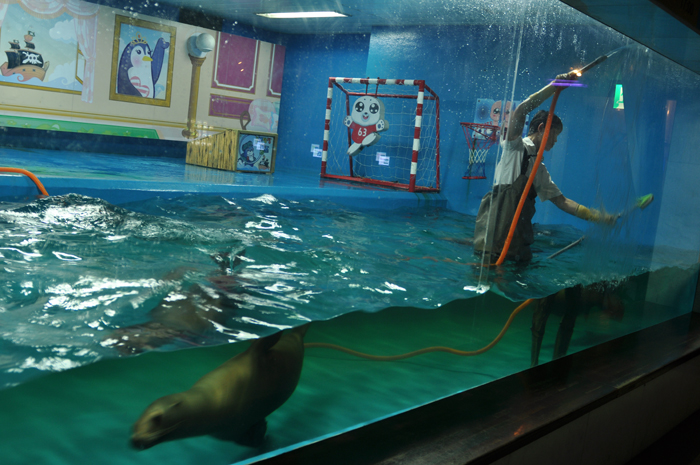

As the clock points to 10:00 a.m., children start pouring in, with parents and teachers leading them. They will never know or care what happens during the two hours before they arrive. After all, it is none of their business. What is their business, though, is to have a good time enjoying the beautiful fish, the mystical lighting, and the seals’ tricks. To guarantee them a good time, the staff of the aquarium toil for two hours every day before opening, unseen and unappreciated. After opening it is already too late: Judgments are already made and either praise or condemnation is given.

Right now in September, as a new semester starts, we have already “opened,” just as the aquarium does at 10 a.m. every morning. Everyone would want to make this semester excellent and perhaps make up for the difficulties of the previous semester. Good luck to everyone! But in the end, it will all depend on how you spent your last two months. The success of the aquarium, after all, depends on the two hours before opening!
